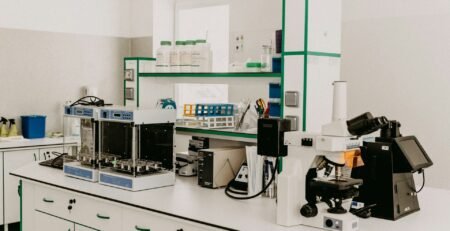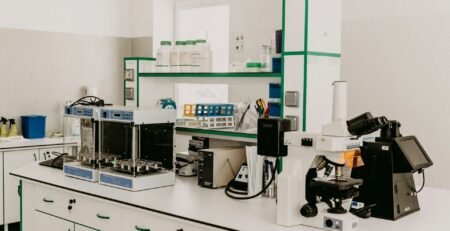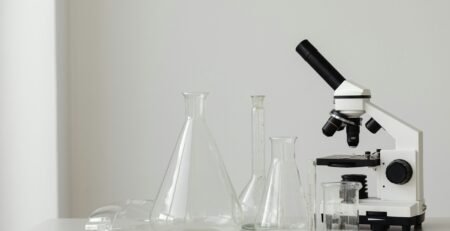
19
Oct
Bad Smells in the Lab? What Your Desiccator Might Be Telling You
Every now and then, something smells off in the lab. It’s easy to brush it off as chemicals hanging in the air or something left out on a bench. If it keeps happening, there could be something more going on.
Sometimes, the problem is right in plain sight. A laboratory desiccator in Australia might not be the first place you’d think to check when something smells strange, but it could be the cause. Used every day and often left alone, these simple tools are easier to forget than they should be. When something goes wrong, they have their own way of letting you know—often through odd smells or signs that you can see.
Let’s take a look at what your desiccator really does in your lab, why smells can be a heads-up that it isn’t doing its job, and what you should check before things get out of hand.
What Is a Desiccator and Why Do Labs Use It?
Desiccators work behind the scenes, but their role is bigger than you might realise. Their main job is to keep things dry. Moisture in a lab can mess with powders, dry mixes, weighing samples, and lots of other things that don’t cope well with water. That’s where a desiccator comes in.
At its core, a desiccator is a sealed container meant to pull water out of the air. Inside it, humidity stays low so sensitive materials stay stable and dry. Some use a chemical drying agent, while others connect to a vacuum pump to get the job done. Either way, it keeps the air stable. The types of things inside can include:
– Dry chemicals
– Metal powders
– Crystals
– Samples moving through lab processes
You’ll find desiccators in science classrooms, keeping delicate solutions ready between lessons. In industrial and research labs, they help store items that need to stay dry from one step to the next. Keeping powders and chemicals stable is one part of the job, but it also helps stop reactions that could be triggered if water sneaks in. The everyday use of something like an autoclavable glass desiccator, which is made to cope with repeated heating in laboratory conditions, helps labs protect their samples batch after batch. Models that meet Australian Standards can be trusted to hold up under regular use in busy labs.
What That Weird Smell Might Actually Mean
Smelling something odd every time you open your desiccator? That’s usually a sign it needs attention. Desiccators are meant to keep things clean and dry, not add new smells to the workspace.
There are a few reasons why a desiccator might start to give off an odd odour:
– Moisture has built up inside and is causing mould, breakdown, or reactions
– Old chemicals or samples weren’t cleaned away fully and have stuck around
– The seal or gasket has worn out, letting outside air in and breaking the airtight hold
Moisture is a problem for more than just the samples—it can make room for organic growths or cause chemicals to react in ways you didn’t plan. If a sample left behind wasn’t cleaned out, the residue can linger. Sometimes the drying agent inside is overdue for replacement, letting the balance slip.
If the rubber seal that sits along the lid is starting to crack or lose its shape, the container can’t keep outside air out. This could lead to the drying agent losing its effect, which throws off everything the desiccator is supposed to protect. Weird chemical smells, stale air, or a whiff of mustiness are all reasons to check what’s going on.
How Poor Maintenance Can Lead to Bigger Problems
It’s easy to skip over cleaning or checking your desiccator since it doesn’t seem like a big deal at first. But if you let things slide, it often catches up with you.
If the seal isn’t tight, little bits of moisture start getting inside. That can mess with how well samples stay dry, put all the contents at risk, and waste the effort you’ve put into keeping things controlled. Powders can clump, mixtures won’t work as expected, and random residues could turn up in your next round of work. Even small trace contaminants from earlier use can become a problem, leading to results that don’t make sense or trouble when you try to repeat a process.
Cross-contamination is another headache. If anything is left from a previous round, it can settle on what you store next. That’s when you get strange readings or unexpected results.
There are bigger risks too. If gases build up inside as chemicals decompose, or pressure increases due to leaks or reactions, the entire container can become a safety concern. That puts both your work and people in the lab at risk. Staying on top of simple cleaning, checking, and upkeep keeps things running smoothly and safely.
How to Get Back on Track Without Guesswork
If you’re not sure the desiccator is doing its job, there are some simple clues to look for:
1. Run your finger along the rubber seal. If you find cracks or it doesn’t feel smooth or flexible, it’s probably time for a new one.
2. Open the container and look for haze, white streaks, or any odd smell. These can show up when humidity has been inside for too long or the drying material isn’t fresh anymore.
3. Check the drying agent. Many types change colour when they aren’t absorbing water as they should. You can get replacement drying agents made for scientific use, and they’re easy to swap when needed.
4. Inspect the interior for leftover dust, powder, or any kind of residue.
Trying to patch up problems or guess what’s wrong can be frustrating. If you’re not sure about a seal or component, asking for help makes things faster and safer. Many suppliers can recommend the right replacement parts, drying compounds, or cleaning products to get you back to solid ground quickly.
Once things are in working order again, doing regular simple checks will help keep bigger problems from popping up.
A Better-Running Lab Starts With What You Can’t See
Desiccators don’t make a lot of noise, but they play a big part in keeping samples ready and results reliable. Whether yours is tucked away or used every day, it keeps everything dry and steady between steps.
Unusual smells or signs of wear can be the lab’s way of prompted you to act before things get worse. Checking for dry seals, fresh drying agents, and a clean interior is a fast way to keep both your materials and your results on track. It only takes a few minutes, but those minutes make every experiment or lesson run better.
Looking after your laboratory desiccator in Australia means you’re backing up your results with care and attention where it matters most. With a bit of routine attention, you defend your process against upsets—and keep your lab running the way you need it to.
If you’re starting to notice issues with storage or changing smells in the lab, it might be time to check how your equipment is holding up. A clean, well-functioning workspace relies on tools that quietly support each step, day in and day out. We often help labs pinpoint simple changes—like updating a laboratory desiccator in Australia—that can prevent bigger disruptions later on. At LabChoice Australia, we’re happy to talk through your setup and help figure out what’s working and what needs a rethink. Feel free to contact us if you’d like to chat about your options.





